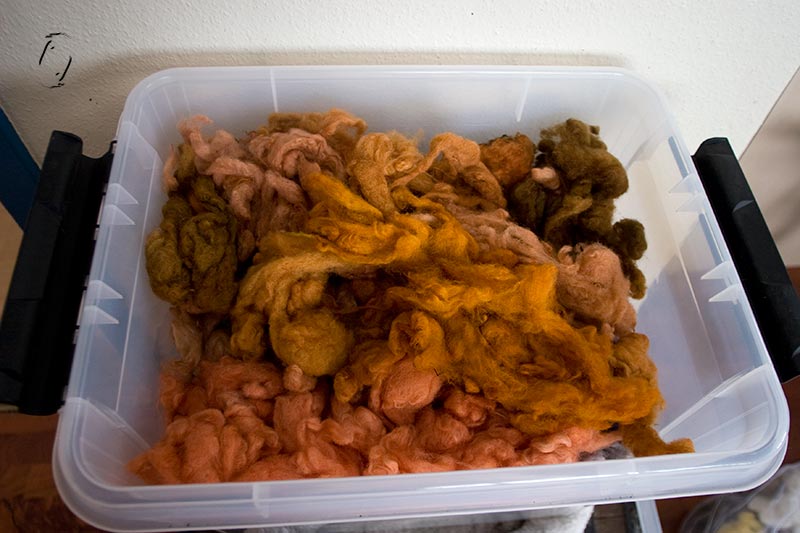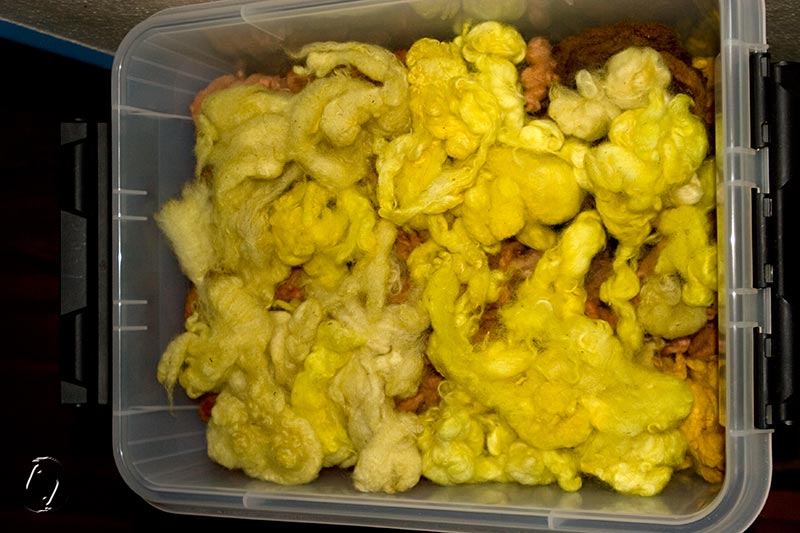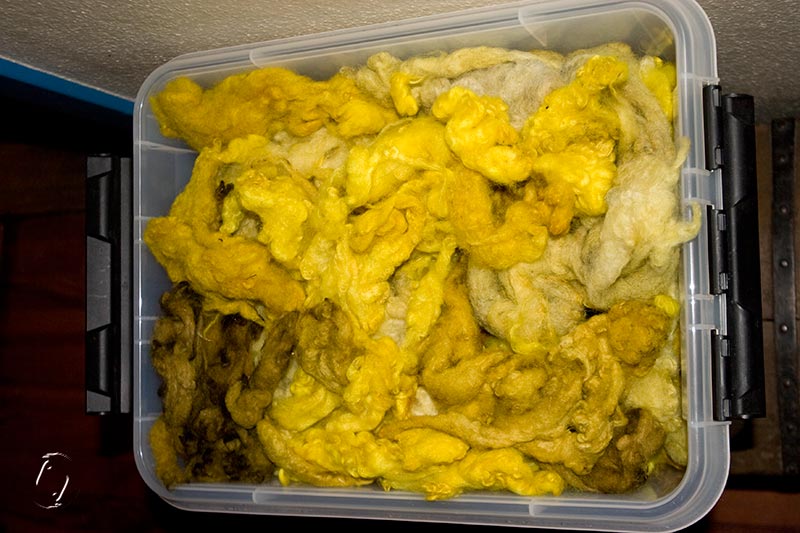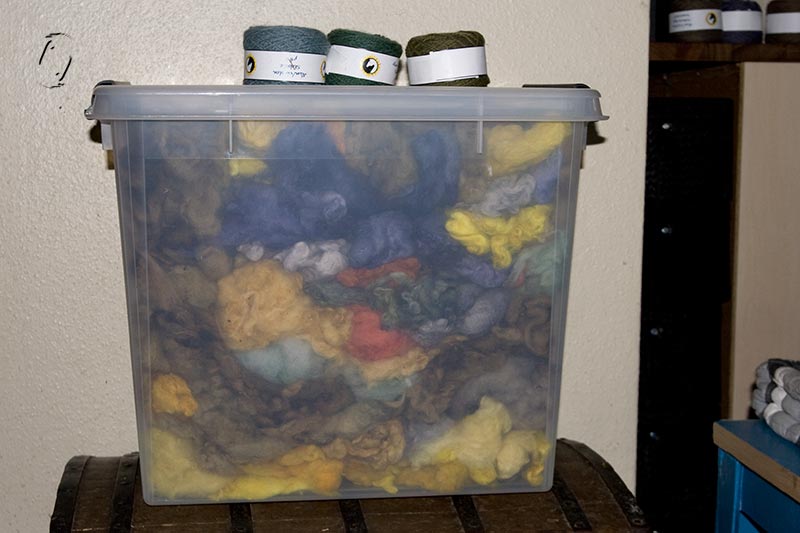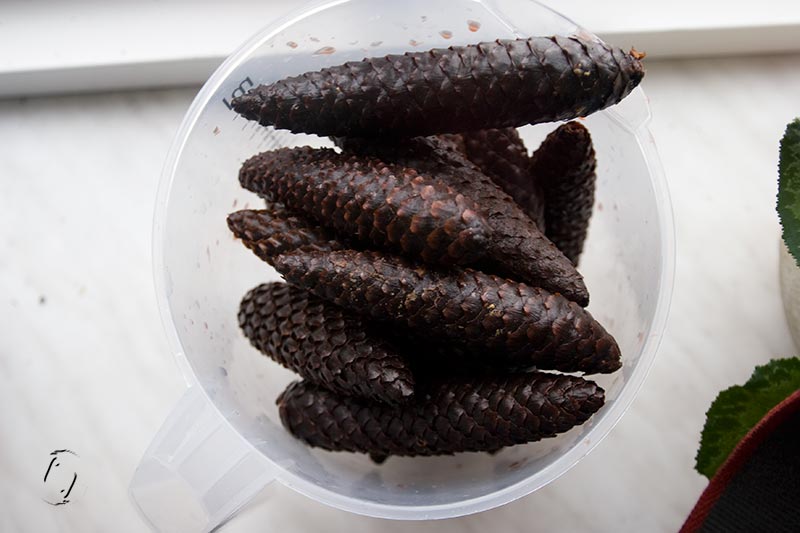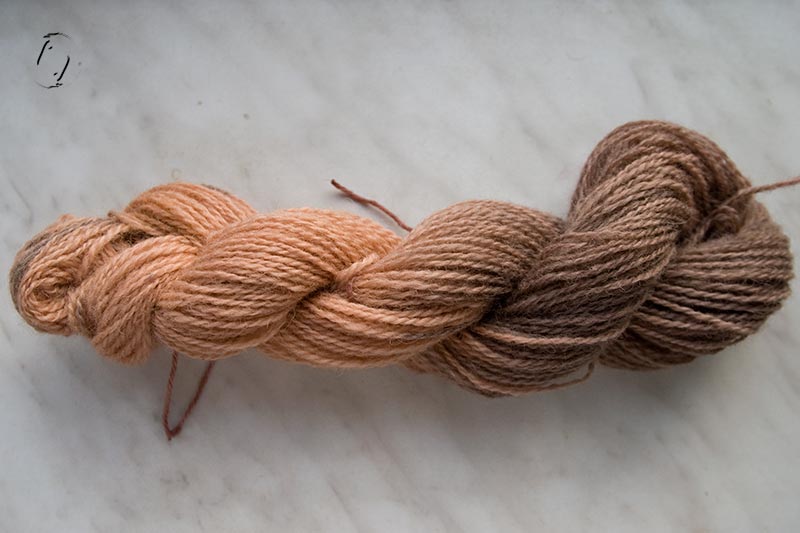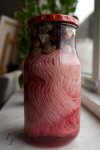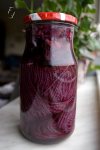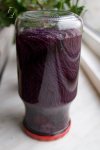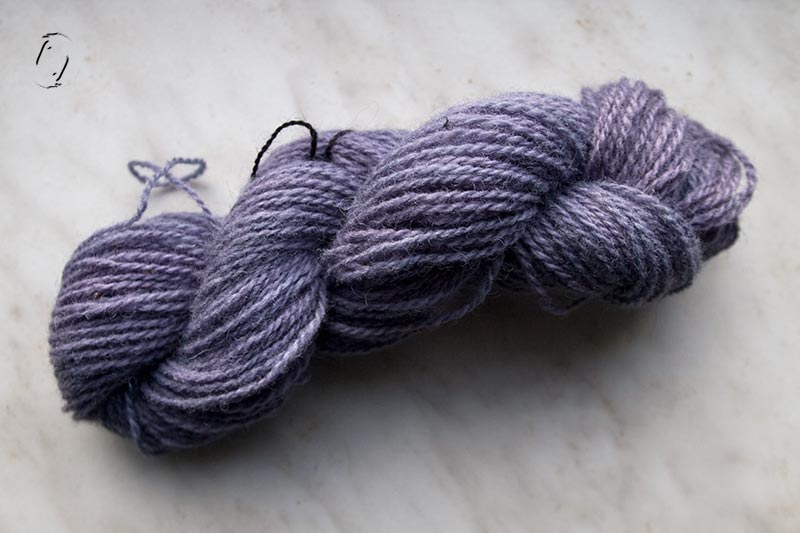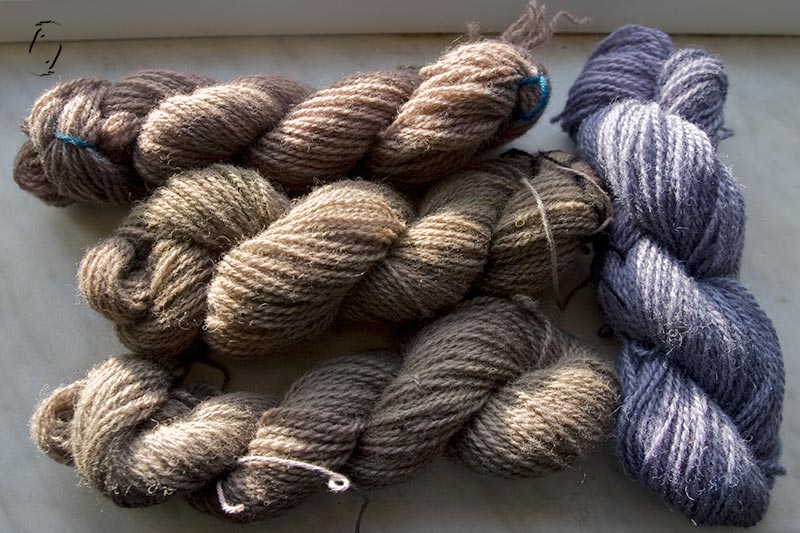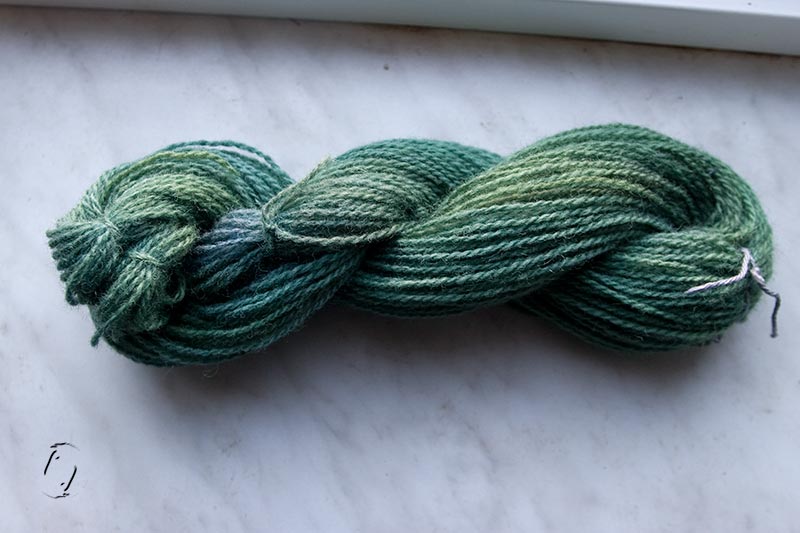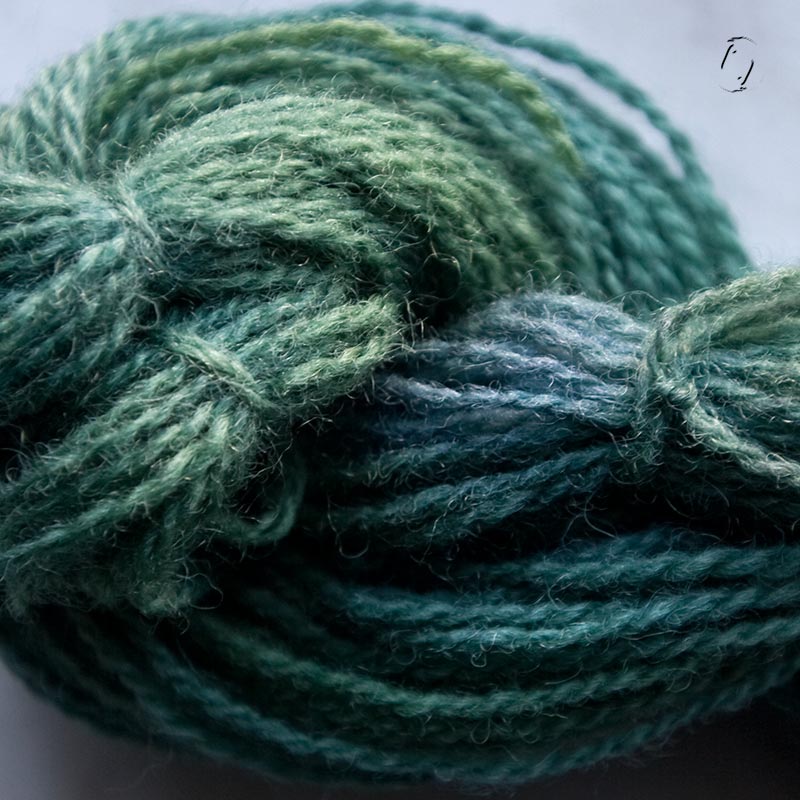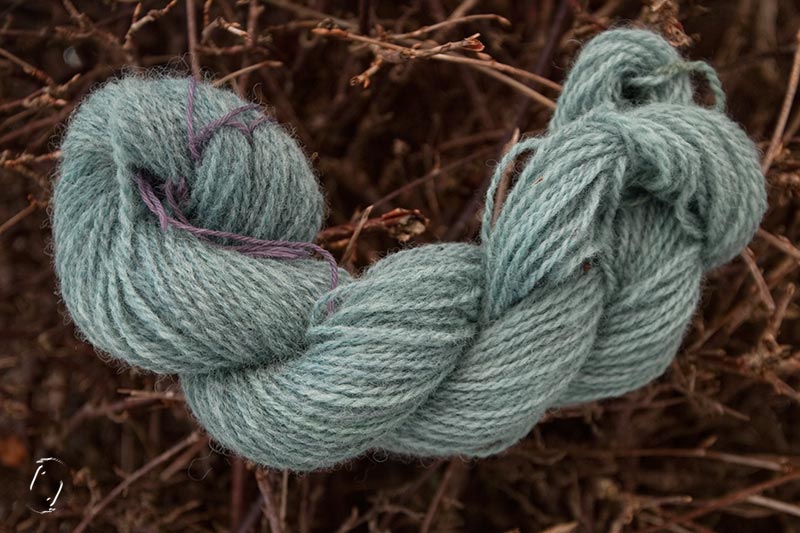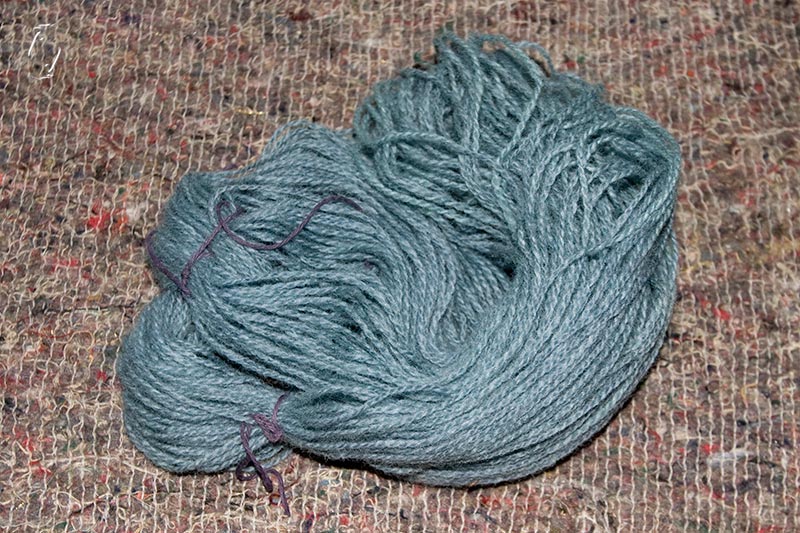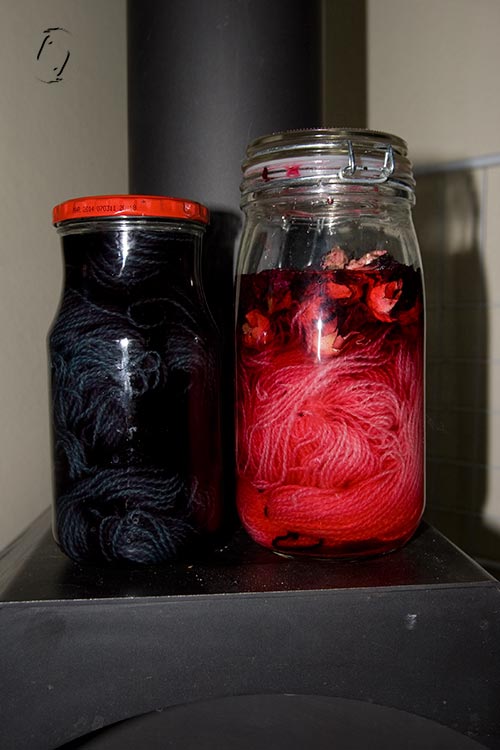This post will be a collection of my last experiments this time round. Nothing special, just to wrap it up as, well as being the only kind of documentation I seem motivated to do for my dyeing…
* * *
I took the very acid jar, strained the flowers, crammed the jar with fleece undtil it was all soaked up, then I filled the jar until it was full and topped it up with the “no longer alkaline” liquid from the blue skein. Since that was already done from exhausts, there was not much juice left, but I wanted to see if I could create a “rainbow” jar or if it would all eventually intermingle to one shade. And this did indeed happen. On the last night the jar was still variegated in looks, red, purple, brown, but in the morning when I wanted to empty it, all purple. The biggest surprise came when I put half of it into ammonia. It didn’t change AT ALL!? No green. WTF? So despite having measured the water to pH 10, I held my breath and added another glug of ammonia. And got grey…. Leaves me wondering if the tin mordant makes the purple more stable?
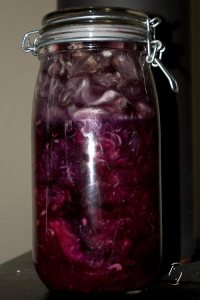
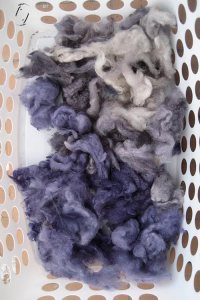
Then I put the very sour flowers from above into a new jar and topped with rain water to see how much juice they had left. Start pH 3 just from the acid in the soaked flowers. Put it on stove shelf, they did indeed contain more dyestuff. pH 3 while hot. Added too much fleece so topped with rainwater, pH 4, very pale pink. Back on the shelf because I had trouble with the set below and wanted to heat test the fleece in dye, even a weak one, before adding the rest of the fleece to a new bath in the canner.
As I mentioned in connection with the pink skein, the heat in itself seems to alter the dye to purple despite the pH. When it was done, it ended up silver grey and it’s the first time I’ve seen a plant dyebath exhause completely. Absolutely clear water left when I took the fleece out! The flowers themselves were also done for, 1st image below is flowers after the last extraction.
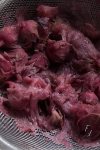
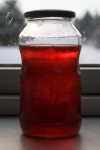
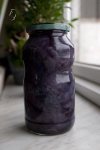
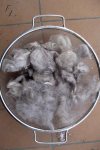
* * *
The Teaser jars: I emptied them after 3 days instead of weeks, as it looked like they were as dark as they could get and just beginning to alter their shade. Turns out, the fleece wasn’t really taking the dye. Whether due to my previously unresolved issues with Dorset or the cold method, hard to tell since no yarn was in there with it. I put it back.



Wait 10 days, still in the window, temps 15-20 C. Very dark liquid, fleece rinsing out nearly white. Mould on top of the rainwater jar, the vinegar jar keeping fine. Time for a quickie on the shelf. That helped, so while cold water does extract the dyestuff, I don’t seem able to make the wool take it at low temps. Also, the flowers didn’t exhaust, they were still dark as ever. (more water might be the solution to that)
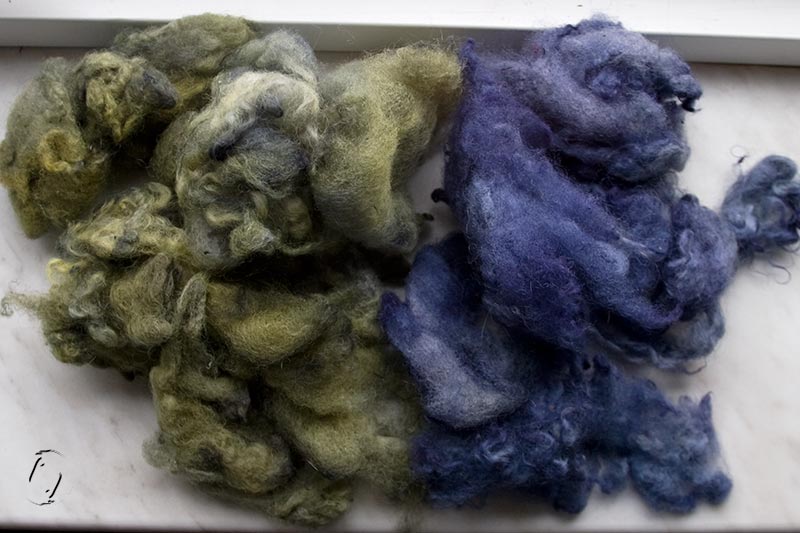
They were so close in colour at the end, even though one was in pure vinegar, that I poured some ammonia directly onto the rainwater batch as it was sitting in the sink, then immediately hosed it with water. And, well, green again, even though there was tin in there. So I still have no clue what happened with the other batch refusing!
* * *
I used a total of 150 g flowers for all experiments, 280 g yarn and 195 g fleece.
* * *
Polled Dorset. Scoured, dyed at pH 7, ammonia pH 9, vinegar pH 2. Iron afters for all. Mordant tin/alum/CoT. Temperature: 60. Well, that was my plan for the remaining fleece. But then I suddenly couldn’t be bothered. So there. I still have some undyed Dorset. And no drumcarder. Spacebags? Fir cones? (yes) Madder? (yes)
– Hollyhock 1
– Hollyhock 2
– Hollyhock 2½
â Leave a Comment
Stokroser 3
Et par smÃ¥ resteprojekter med stokroserne pÃ¥ tin-bejset dorset uld, noget af det farvet “lunkent” pÃ¥ brændeovnen, noget forsøgt koldt i vindueskarmen, men selvom det sidste trækker farve ud af blomsterne, sÃ¥ sætter det sig ikke pÃ¥ ulden.
Jeg kunne ikke få den grønne farve frem denne gang, ved ikke om det evt. er tinnet der holder på det blå-lilla.

